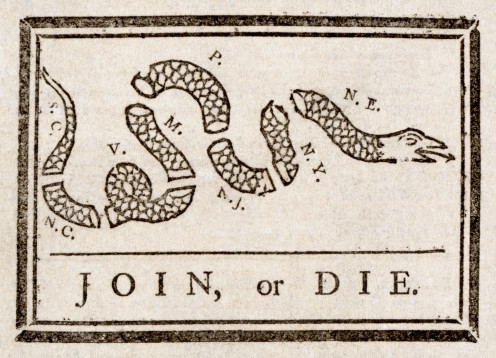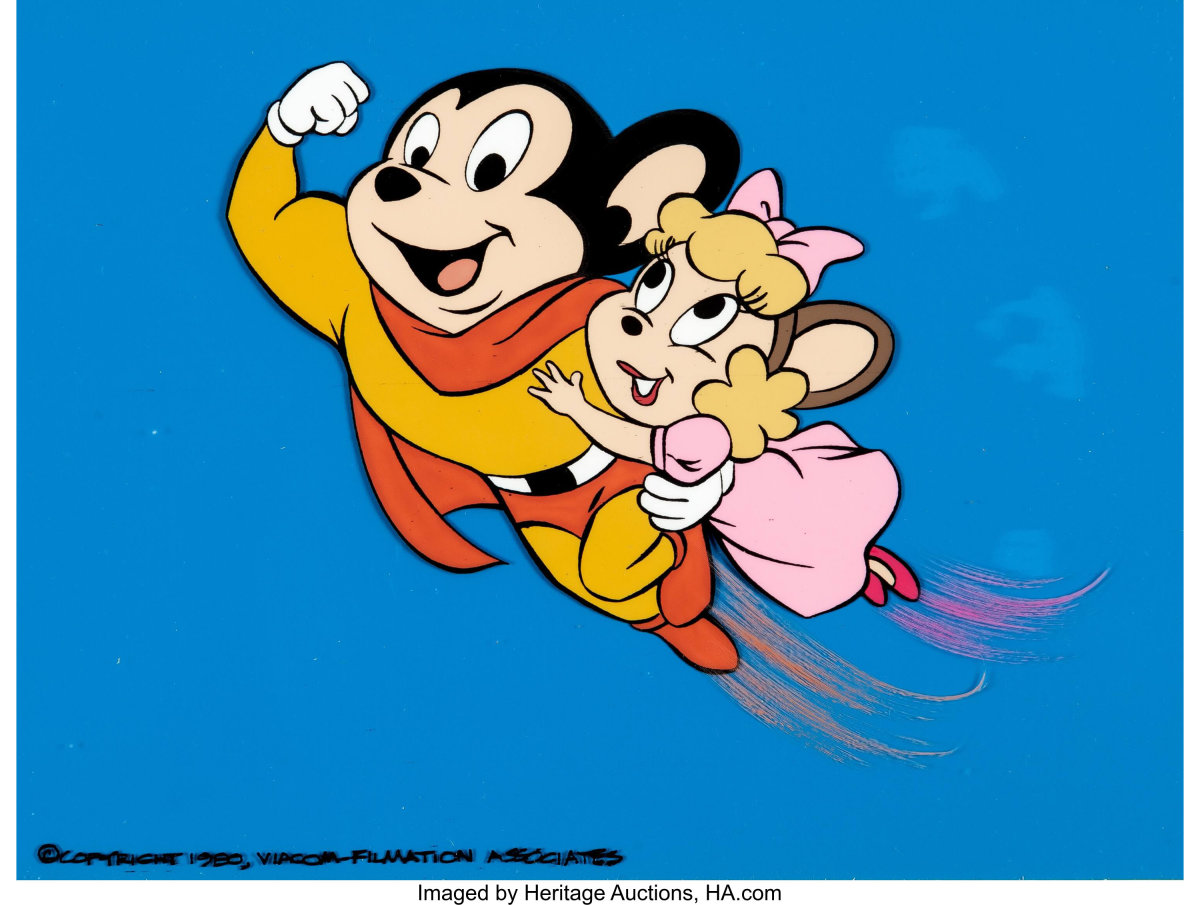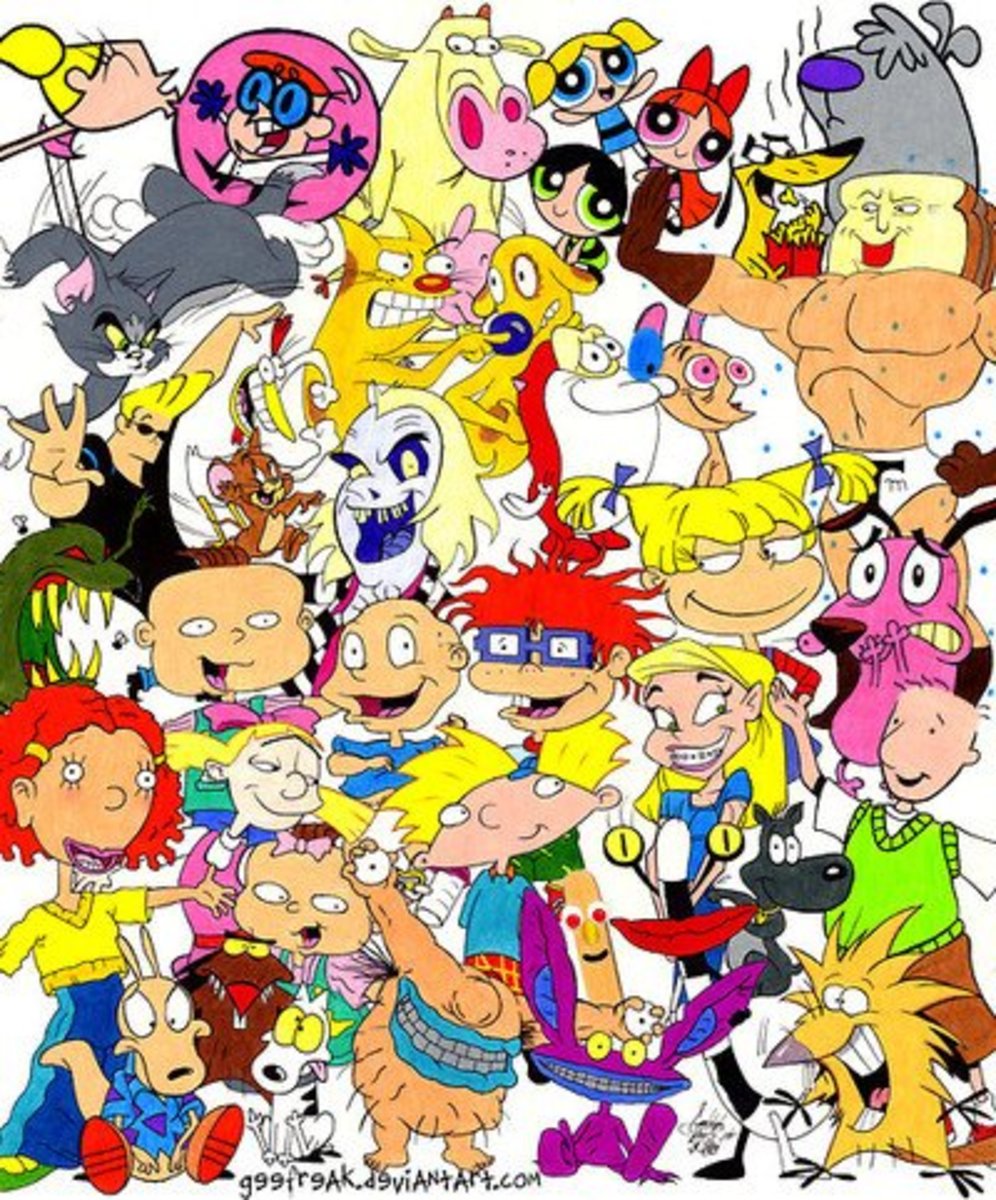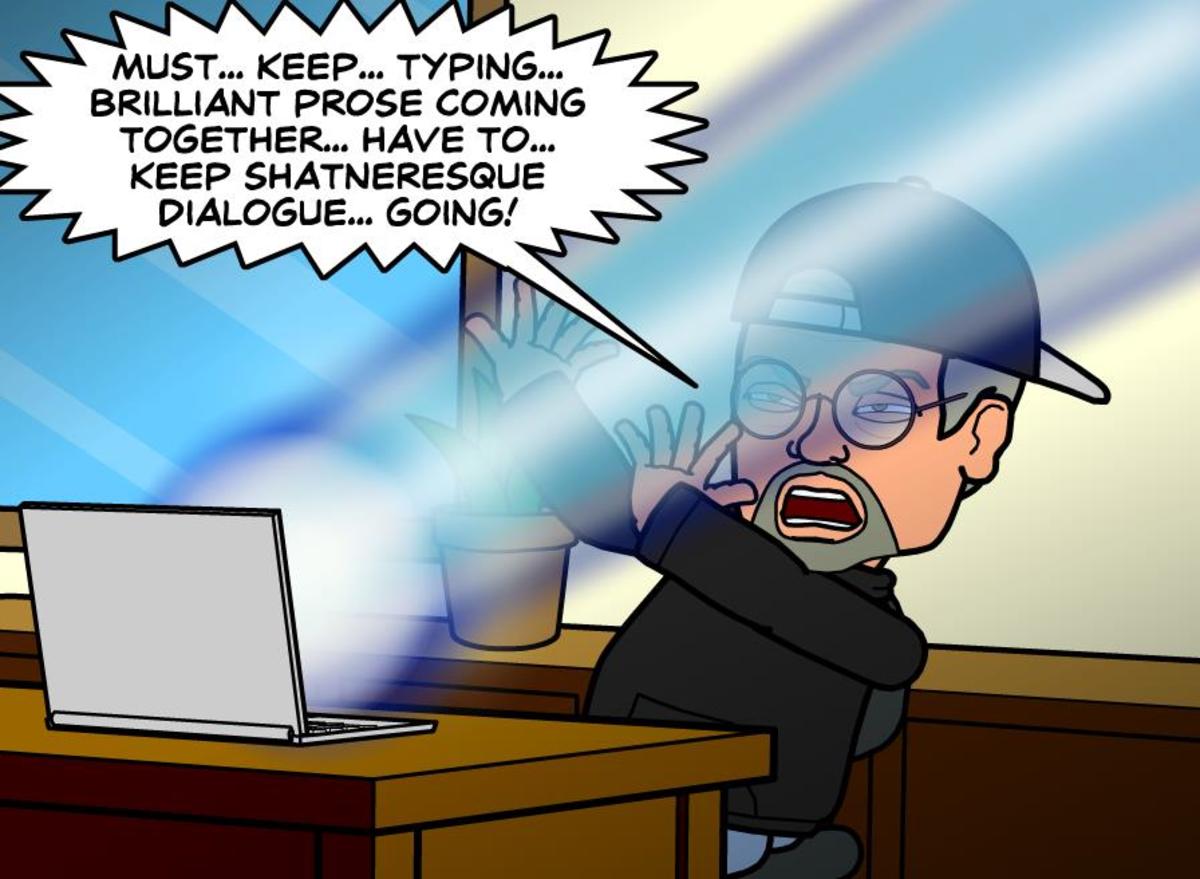An Editorial Cartoon Speaks Volumes

A Picture Is Worth 1000 Words
No where is that adage more appropriate than with the editorial cartoon.
Editorial cartoons, sometimes referred to as political cartoons, have a long and storied history. Examples of published caricature, parody and satire date back to the earliest civilizations, and I wouldn't be surprised if one of the first uses of Gutenberg's printing press in the 15th Century was to lampoon those who opposed the Holy Roman Empire. Here in America, where free speech is guaranteed in the Bill of Rights, Ben Franklin's "Join Or Die" is a classic example of political expression by way of images. The simple depiction of a segmented snake clearly illustrates Franklin's opinion that the only way for the disunited States to survive is by forming a Union. His cartoon accompanied an editorial essay which certainly provided more specific details of Franklin's opinion, but the powerful image has survived the test of time more than the founding father's words.
As publishing technologies advanced, along with photo reproduction and mass distribution, the editorial cartoon has remained a fixture on the editorial pages of newspapers throughout the country, and certainly around the world. Artistic styles vary from over-the-top silly to beautiful works of true art, many suitable for framing. It is a form of expression that speaks to me because they convey a succinct idea usually in a humorous way. Editorial cartoons, the GOOD ones, are clever and thought provoking, characteristics I like to think I possess. I find it interesting that they can also cause heated controversy, as illustrated by the Danish Newspaper Jyllands-Posten series of cartoons aimed at the Muslim religion published in 2005.
I often think that I missed my calling and should have been an editorial cartoonist. The only things I lack are the artistic talent and the gift of seeing the world as only a political cartoonist can. Oh well. But my reverence for a well thought out, simply drawn expression of opinion remains strong regardless of the artist's political or social leanings. A recently published cartoon by Clay Jones of The Fee Lance-Star, Frederickburg, Va., stood out to me as a wonderful illustration of the nature of social and political discourse in America today.

The fellow in the "Save Zimmerman" shirt (I'll call him "Sam") and the fellow in the "Justice for Trayvon" shirt (I'll call him Fred") would like to have a meaningful discussion about this very important issue. Sam and Fred represent a segment of society that, if given the chance, would state their opinion clearly yet passionately and then listen with reasonable ears to the opposing view. Most people believe in the notion that honest, open communication is the only way to reach an accord between such conflicting viewpoints. That theory is a bit of political correctness combined with a smidgen of wishful thinking, yet it still prevails in us sensible thinkers in the world.
Making it impossible to have a meaningful dialogue, however, are the extremely LOUD and disruptive voices represented by the crowds behind Sam and Fred. The Neo-Nazi movement is a despicable group who represent a small fraction of the American population. They have the deplorable opinion that Trayvon Martin deserved what he got, and they rush to George Zimmerman's defense based solely on that thought. Sam reluctantly finds himself on the same side as a group he does not endorse in the least. Fred is in a similar position. Many people believe the New Black Panther Party is an extremist group which practices reverse racism. They represent an equally small fraction of the public with their opinions and mean-spirited rhetoric. To Fred's dismay he finds himself on the same side as a group he doesn't believe will help solve the problem. Politics make strange bedfellows, that's for sure.
The reason Clay Jones's cartoon stood out to me, apart from the artistic style in the exasperated looks on Sam and Fred's faces, is that it does more than represent the two sides of the Trayvon Martin case. Sam could have a "GOP" shirt on with a crowd of far-right extremists behind him, and Fred could be wearing a "Democrat" shirt surrounded by liberal kooks. Sam and Fred could represent the two sides of the environmental debate, or the union vs. non-union argument. Heck, Sam and Fred could be wearing Red Sox and Yankees shirts! The problem Mr. Jones represents so artfully is that the extremists dominate these discussions. The radicals get all of the air-time, which is also a comment on the media. The news outlets have plenty of provocative sound bytes from the overbearing zealots on each side because they are speaking the loudest, which in turn makes for good ratings. Sam's crowd makes an outrageous statement which elicits a Newtonian "equal but opposite reaction" from Fred's supporters. Unfortunately, the two sides exchange more than hateful words. Fists and bullets fly from the far ends of the political and social spectrum, while Sam and Fred duck and run for cover.
I sympathize with the Sams and Freds of the world. On the grand spectrum, it is a tragedy that the big issues facing society are left unsolved due to the explosive rhetoric that commands the airwaves. On a smaller scale, I happen to appreciate a good debate with thoughtful, well articulated stances, something you won't see from the angry mobs behind Sam and Fred. I don't believe Mr. Jones is advocating a centrist point of view, and I am not a proponent of the happy middle ground either. Sam and Fred may be diametrically opposed to one another, but an impassioned debate would do more good than two angry mobs screeching at each other.
Of course, I may have over interpreted Mr. Jones' work. In my convoluted head, his specific point about the Trayvon Martin case was extrapolated into an all-encompassing commentary about social discourse. Then again, there lies the beauty in art -- and make no bones about it, Clay Jones and his colleagues are certainly artists. Interpretation is the thing.








